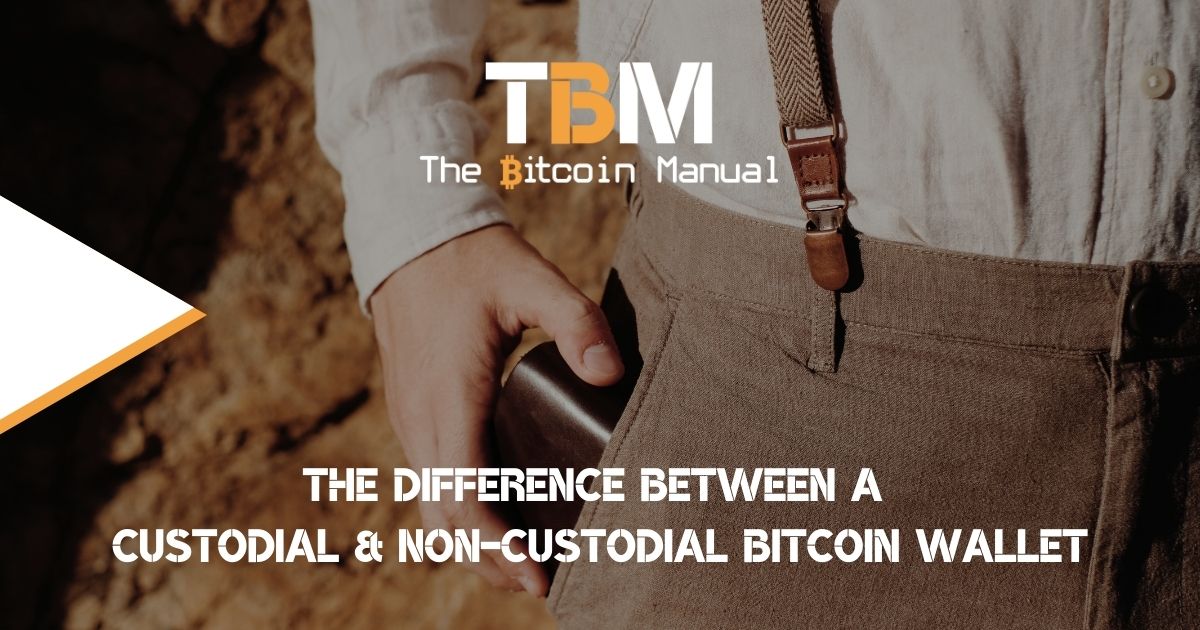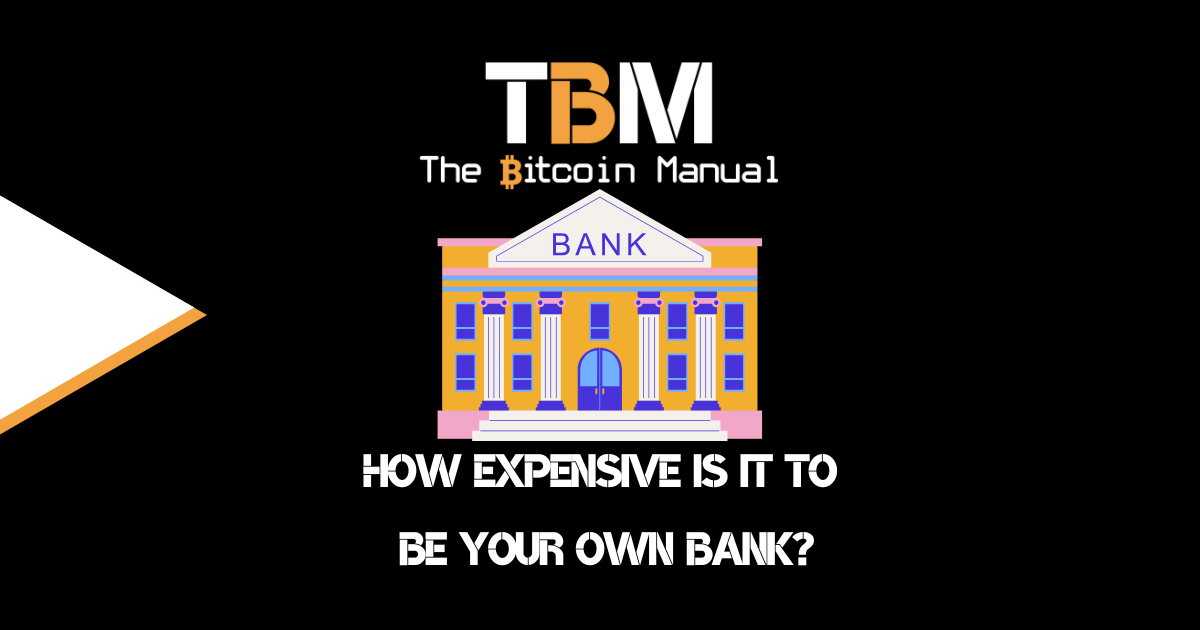Buying Bitcoin may sound simple enough signing up to a centralised exchange, P2P or decentralised exchange. Then load up your account and trading fiat or a stable coin for Bitcoin. Still, when you accept Bitcoin into your possession, there are several considerations you have to make regarding safety, security, cost and complexity.
Depending on your Bitcoin needs, you may need to opt for a custodial wallet or a non-custodial wallet. So what does this mean, and why does it affect your Bitcoin usage? Well, let’s take a look, shall we?
What is a non-custodial wallet?
A non-custodial wallet is a type of wallet that leverages the decentralised cryptographic technology of the Bitcoin blockchain. It’s where the customer owns its private keys and broadcast all transactions directly to the blockchain by signing a transaction with their private key. When setting up a custodial wallet, the user gets a file with private keys and needs to write down a mnemonic phrase with which they will be able to restore their funds. Having private keys means that you have complete control over the funds.
Only you will ever have access to those keys, and there is NO WAY to recover them. You are also responsible for storing those keys safely and not giving anyone access to them short of you wanting them to access your Bitcoin.
Sounds good, right? If you’ve selected this method, then you are a sovereign individual in control of your property. However, with all that personal responsibility in hand, it means you are the central point of failure, so it’s essential to make sure you learn all the safety and privacy practices of non-custodial Bitcoin holding.
It’s entirely okay for you to set up non-custodial wallets without any Bitcoin, learn how they work, how to restore a wallet to the same or new device and how best to store your keys. Once you feel comfortable with the process, then you can start to move your Bitcoin into private ownership.
What is a custodial wallet?
A custodial wallet is probably something any modern-day banking user would be familiar with; this is a type of digital wallet where a 3rd party, like a bank, exchange or wallet provider, keeps the customer’s private keys and provides backup and security for your assets. You would have logins into their server and your account, where you can transact, but these are only representations of your Bitcoin; they are not actual Bitcoin.
Only once you withdraw from their system to a non-custodial wallet do you receive a Bitcoin transaction known as a UTXO.
Yes, you read that right. Custodial wallet providers their users’ private keys and, in most cases, never provide you with access to these keys. But why do they do that?
One would be to have control over your money, but the primary reason is to abstract all the complexity of Bitcoin and move it to their side while you manage a simple interface similar to any banking app you’ve used in the past.
Custodians wallets aim to provide users with the most convenient way to store their Bitcoin. Some people seek secure and customer-friendly solutions, which can give them access to their assets at the touch of a button. So if you lose your logins or cannot sign in, they can provide customer support; if your wallet app crashes, they can assist you and much more.
This does provide you, new users, with a fallback solution, but it also defeats the purpose of Bitcoin, which is to take full ownership of your money.
Custodial services are easy to use and may be cheaper since you never touch the chain with your transactions; it’s all done internally with their servers unless you’re communicating with a non-custodial wallet.
This makes it ideal for smaller transactions and holdings such as those getting started or a place to consolidate your funds as you make regular purchases or dollar-cost average. Once you have a larger amount in your custodial wallet that makes sense to bring on-chain, you can always move it off to a non-custodial wallet.
Pros and cons of each wallet type
| Custodial Wallet | Non-Custodial Wallet | |
| Private Keys | Held by the wallet provider | Held by the user |
| Security | Somewhat secure | Very secure |
| KYC | Some providers require KYC | Typically no KYC |
| Cybersecurity | Data stored by the provider may be vulnerable to theft and leaks | Typically no user data is stored on the provider’s servers |
| Withdrawal Limits | Some providers have withdrawal limits | No withdrawal limits |
| Beginner-Friendliness | Usually easy to use for beginners | Some wallets can be more difficult to use for beginners |
How do I tell the difference between the two wallet types?
The simplest way would obviously be to research your wallet of choice and see what it is categorised as, but if you already have a wallet, the easiest way to tell us during the set-up phase.
When setting up any non-custodial wallet, the user interface will require you to generate a secure password known as a private key or seed phrase. This typically takes the form of either a file or a ‘mnemonic phrase’ that consists of 12-24 randomly generated words. If your wallet doesn’t have this option, it’s custodial (meaning you’re not in full control of your Bitcoin).
Since non-custodial wallets are based on private-public key cryptography, they would never need any other data to verify a transaction, so there is no need for 3rd party identification, no need for 2-factor authentication (2FA) or KYC, which comes with dealing with a regulated entity holding funds on your behalf.
Custodial wallets normally allow you to sign in with a simple email, phone number, or password, and their security measures would be in the form of 2FA or KYC.
If a wallet only requires an email and password to transact and you never need to store any keys, then this is a custodial service.
Deciding between security and convenience
If you ask most Bitcoiners, they will push for a more sovereign approach to holding your Bitcoin, and this is always the better security option. However, it doesn’t mean custodial services are evil. You can still use them, but understand the risk you’re taking and allocate your funds accordingly.
You don’t have to use one over the other; you could use a combination and have multiple wallets. There’s no single way to hold your Bitcoin, and everyone will want a different set-up depending on their needs, competency and size of their holdings.
Regardless of your choice, of wallet always be sure to follow best security practices for that wallet method and ensure that Bitcoin security is always top of mind.





One Response
I do like the sovereign side of non-custodial wallets and once you have tried it a few times, it isn’t so difficult but is very empowering! Having said that, I do have other custodial wallets to earn interest and keep things ticking along which is an amount I’m happy with being out of my own. Plus it mitigates risk in case something does happen to me and I make a monumental cock-up! As always though, Bitcoin security is paramount and you need to take the appropriate measures depending on your own situation!